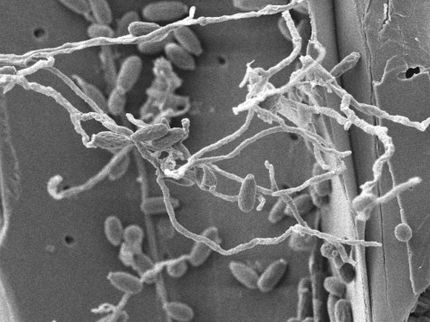New model makes us wiser on cocktail effects
Advertisement
The ability of chemical combinations to precipitate a cocktail effect is acknowledged. We can also calculate the impacts of various chemical products ranging from shampoos to pesticides. However, critical exceptions add uncertainty to these calculations. One group of chemicals, known as synergistic chemicals, makes it hard to accurately calculate chemical effects. Simply put, synergistic chemicals amplify the effects of other chemicals.

5arah; pixabay.com; CC0
Now, researchers at the University of Copenhagen have successfully devised a model that accounts for synergists. The model can serve as a useful tool for environmental legislation.
"One of the greatest uncertainties in EU environmental legislation is that we do not know the precise effects of synergistic chemicals when determining the scale of damage to nature from chemical cocktails," says environmental chemistry professor and lead researcher, Nina Cedergreen. Her research team's studies have just been published in Environmental Sciences, a journal renowned for presenting cutting-edge environmental research.
Synergists everywhere
The researchers performed experiments using antifungal agents that can increase the effects of insecticides among other things, and investigated the synergistic effects on crustaceans. They managed to summarize the data in a model that makes it possible to predict the effects of certain synergistic antifungal agents.
"Until now, we haven't been able to calculate the synergistic effects on the useful organisms in fields and small animals in aquatic environments that are hard hit by chemical combinations, while less impacted by individual chemicals," she explains.
Professor Cedergreen hopes that the model will make it easier for people to calculate cocktail effects, when and where synergists are involved, so as to better predict the impact of chemical combinations. Most importantly, the model is an important tool for gaining deeper insight into how synergistic effects arise.
"Oftentimes, we don't know what the mechanism behind the synergy is. Minus that knowledge, we don't know what chemicals to look out for when investigating cocktail effects," continues Cedergreen.
From wheat fungi to yeast infection
Even though Nina Cedargreen's research is aimed towards environmental legislation, synergists are found in everything. The antifungals tested in the experiment and used to develop the model are also used to treat fungi in humans. And, something as common as grapefruit juice contains synergistic agents that make it necessary to exercise caution when taking certain types of medication.
"Synergists are everywhere. They are found in agriculture, industry, consumer products, and in pharmaceuticals. Large quantities also occur in nature," says Cedergreen.
The next step for the researchers is to expand their trials to include a far greater number of synergists and types of organisms and build a comprehensive model that can be used more broadly and in multiple contexts.
































































